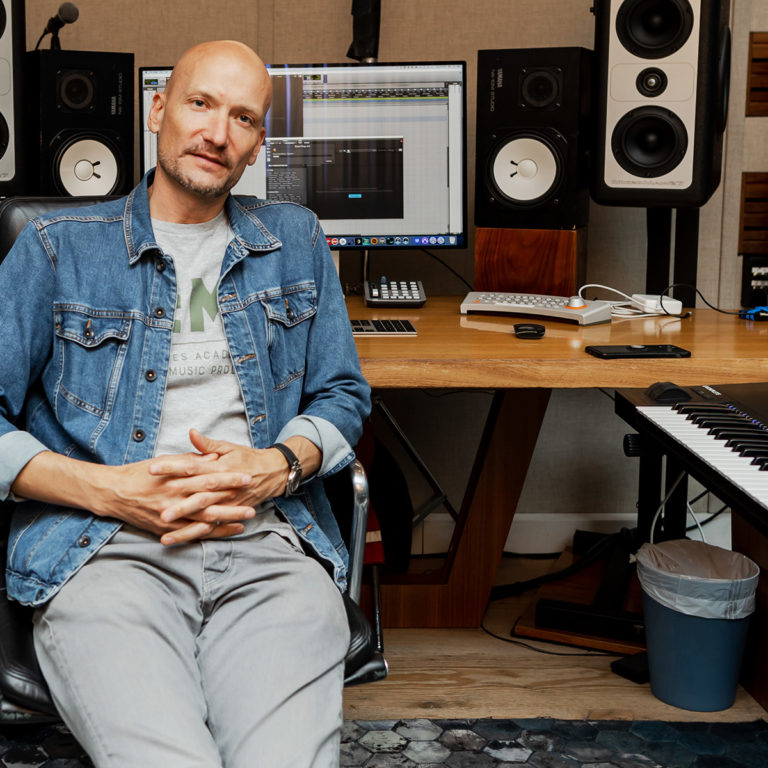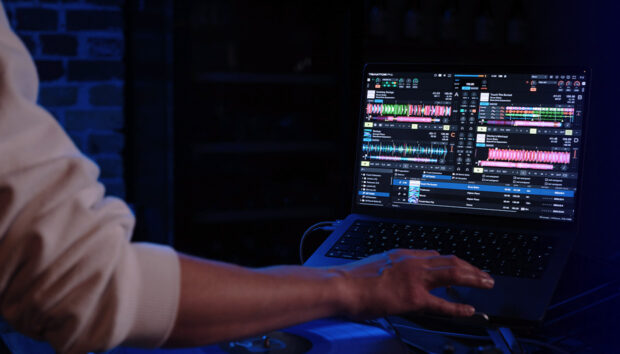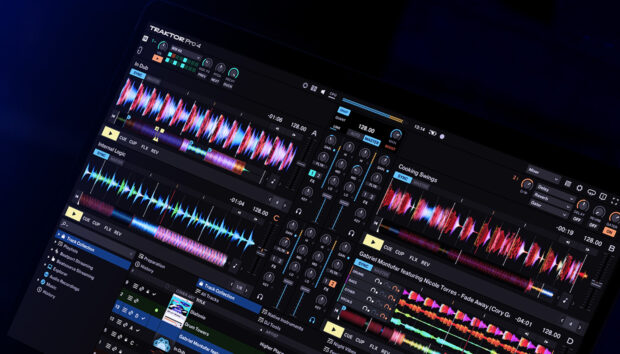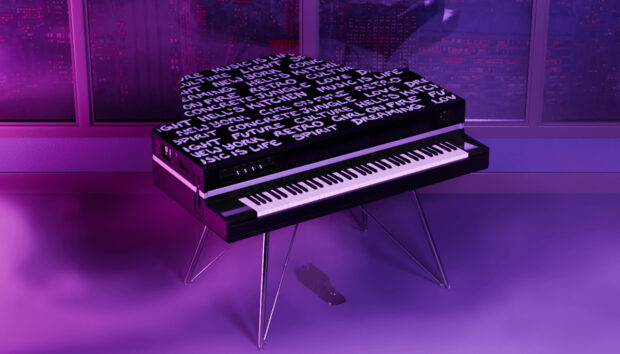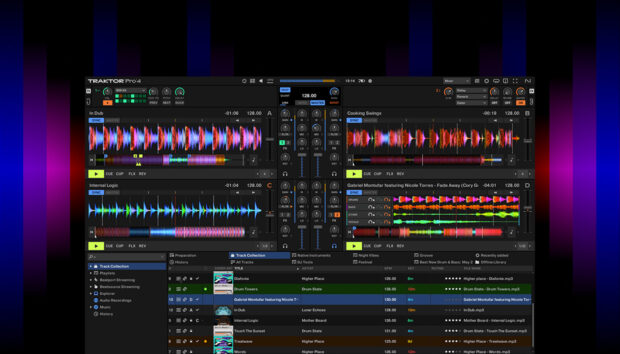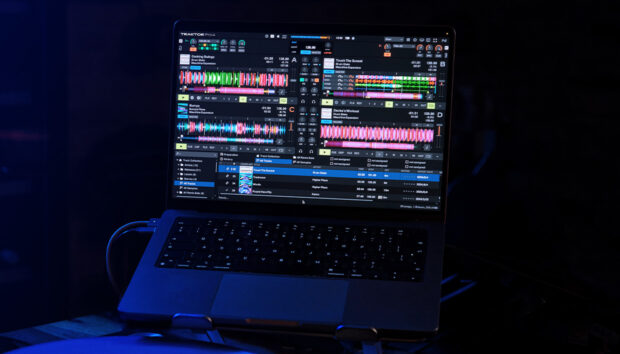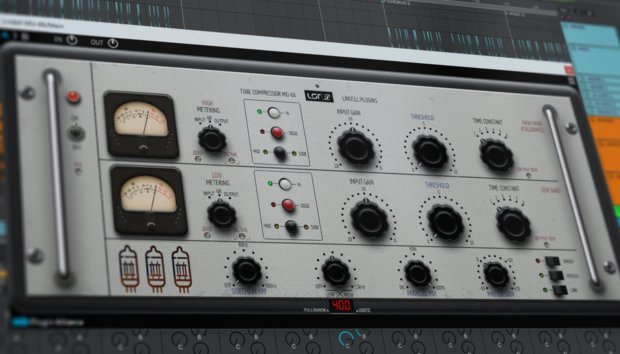The key to producing melodic hits with undeniable, culture-defining magic? Not being too precious with your beats. The power of letting go is what Mikkel Eriksen, half of powerhouse producer duo Stargate, took away from the process of producing the biggest pop and R&B hits of the past two decades, including Ne-Yo’s “So Sick,” Katy Perry’s “Fireworks,” and Rihanna’s “Diamonds.”
We recently headed to Stargate’s studio in Venice, California to find out how Mikkel (and his partner Tor Hermansen) used Native Instruments products like UNA CORDA, ABSYNTH, and KONTAKT on some of Sam Smith’s biggest pop hits – “To Die For” and “Dancing with a Stranger (featuring Normani).” While we were there, Mikkel even started making a beat from scratch on the spot, giving us further insight into how quickly his production mind works.
Watch the video below and keep reading to learn more about Mikkel’s creative choices and Native Instruments favorites, and discover some handy tutorial links for diving deeper into music production.
Keep reading below learn more about Mikkel’s creative choices and Native Instruments favorites, and discover some handy tutorial links for diving deeper into music production.
Lead synth line with ABSYNTH 5
“We came up with it from scratch in one day, start to finish, the whole thing,” says Mikkel of Sam Smith’s “Dancing With a Stranger.” It started with his partner Tor Hermansen playing with a sine wave pad sound from ABSYNTH 5, a powerful semi-modular synthesizer perfect for evolving, unusual soundscapes. Igniting a production session doesn’t require endless browsing – the preset Tor played is ‘Untitled Sound,’ the first sound that comes up in the synth. “We tweaked it with some modulation, and we also added Valhalla Room [reverb] to give it a little more space – and that’s how the whole song started.”
Get deeper into ABSYNTH 5’s Mutator sound design technology and it’s fine-tuning controls:
Vocal layers with effects
The next step in the song was adding extra textures to make it more interesting. “What we did was use a handheld mic and then sing a little melody on top of it, just pretend words. It doesn’t mean anything but together with the pad, it creates something interesting,” says Mikkel. The valuable lesson here is that spontaneous, playful elements can become the perfect puzzle piece to push a song further. With a bit of Autotune, some compression, and reverb, mushy words can turn into an otherworldly melody. The ethereal-sounding syllables lure the listener in and gently introduce the story of the song in an abstract way.
Take it one step further and learn how to turn a vocal sample into a synth hybrid with NI’s FORM:
Bassline created in MASSIVE
For the bassline, Mikkel used the intoxicating power of MASSIVE, specifically the groovy but edgy preset ‘Apologize This.’ To make it “more alive and soulful,” Stargate added a lot of small riffs, elevating the composition to an inviting mix of play and grace. Besides finding the right sound, being a top-class producer also means thinking beyond the studio and imagining how the average listener is likely to consume your songs. “It’s really tough to find a sub that is both super thick and low, but also audible on small speakers.” And that’s where the versatility of MASSIVE comes in.
A few easy steps will give you super-wide sub bass in MASSIVE. Learn how in this video:
Muted guitar in KONTAKT from Orange Tree Samples’ EVOLUTION STRAWBERRY
To introduce a rhythmic element in the chorus, Stargate chose a muted guitar from KONTAKT, an extensive sampler for any situation. He turned to a pool of sounds he reveres: “It’s the library that I absolutely love called Evolution Guitars, specifically the Evolution Strawberry instrument’s preset Kimchi. Hand-picking the right preset can be quick, if you know what you want. Mikkel was seeking an element to give this “Dancing With a Stranger” more rhythm and groove. “That’s why we played that kind of funky mute guitar,” he says. “That really helped pick it up.”
KONTAKT 6 powers the world’s biggest selection of sampled instruments. See what KONTAKT can do for you:
Producing Sam Smith’s “To Die For”
“To Die For” is another Sam Smith record blessed by Stargate’s musicianship. “I was sitting here and playing with this piano sound that I love. It’s a preset from UNA CORDA, the Felt Piano.” This evocative, alluring instrument created a sonic entryway of pure emotion. “I was just sitting here and playing this super simple little riff and Sam came in and [said]: ‘What’s that? I love that!”
See how legendary pianist Nils Frahm and David Klavins created UNA CORDA:
Airy piano riffs with UNA CORDA
Sam Smith encouraged Mikkel to keep the UNA CORDA riff rolling, and wrote “To Die For” right away.. “That sound is the basis of the whole song, it goes throughout the whole record,” Mikkel recalls. In a 2010 interview with Sound on Sound magazine, Mikkel and Tor stressed the importance of keeping songs to a few main elements (and a great lead vocal). “The less you have in a track, the better it is, because when it’s played on the radio and you get compression and everything, it sounds better if you have fewer elements… For that reason we try to focus on simplicity and primary colours in our songs and arrangements.”
Take a walk through UNA CORDA, a favorite of producers and composers worldwide:
Strings from KONTAKT’s SYMPHONY ESSENTIALS
Besides sprinkling the tune with filter drums and Stargate’s favorite MASSIVE, it was time for the eternal language of strings. “We used the SYMPHONY ESSENTIALS STRING ENSEMBLE [library]. I love this one. We use that on a lot of stuff, like a lot of the new Sam Smith records..” Working with the musical scale of a full orchestra at one’s fingertips gets even more fun with the expression wheel: “It is not only about volume, you can hear it in the subtlety of the way it’s played and the vibrato – it’s super expressive.” The option to manipulate a myriad of essential articulations is string paradise for any pop or electronic production.
Check out a dazzling array of string sounds and articulations in String Ensemble:
Filtered drums in “To Die For”
The hard-hitting filtered drums is what put the track into the modern day. “What’s unique about it is that everything is filtered – it has an analog cut that it goes through,” says Mikkel. He also used a fat, layered kick and an 808 tom in place of a snare, and a different kick and snare atop the choruses. “This is, again, super simple – the way we love to produce our records,” he offers. “One main chord instrument, a sub-bass, some strings, some filtered drums, and an amazing topline, an amazing artist on top. That’s all you need!”
Like filtered drums? Learn how to achieve that effect quickly and easily with the turn of one knob, inside our new instrument with Drake’s producer Noah “40” Shebib.
Mikkel makes a beat from scratch with KOMPLETE
Creating beautiful music doesn’t have to be painful, but making the right decisions takes practice. Mikkel puts all his production wisdom into practice by making a track from scratch right in front of us. “I’m gonna play some chords and I’m gonna use GUITAR RIG to create some interesting vocal effects.”
Watch Datsunn make, mix, and master a track with Native Instruments KOMPLETE and Izotope’s plug-in bundle:
Chord harmonies with ALICIA’S KEYS
MIkkel starts off by playing with an ALICIA’S KEYS piano – a soulful, tender, and strong melody. What he does next is a recipe for delicious sound. Add some reverb with a low cut and high cut, bring in a filter, some resonance, and filter it down from there. He then enhances the sound with some subtle sidechain. “We’re not making an EDM record here,” he jokes drily.
Here’s the queen Alicia Keys showing us around her ALICIA’s KEYS instrument:
Creating vocal samples with a cellphone
Anything can be a sample, and using everyday tools enables on-the-go inspiration. It can also add a harsher sound that can make your track raw in all the right ways. Mikkel does this by using his phone to record vocals: “One cool trick to do is actually get a gritty sound on your vocal samples is just record on your phone instead of recording on the real mic. That can make it sound a little more dirty.” Not being afraid to get experimental can bring a sweet reward. “Try some crazy stuff too! It might sound totally ridiculous and crazy while you’re doing it. But once you put it into the computer and start messing with it, those are the things that could be really cool.” After adding a bit of EQ and compressor and making the vocals in time and in tune, Mikkel is ready to move onto the next step.
Not ready to sing your own vocals, or just need some backup? Check out the dope vocal sounds in our instrument GLAZE.
Staying inspired
When Mikkel was growing up, he covered all the production stages – producing, programming, and recording the vocals. “I didn’t know that you could be a producer. So when I discovered that I can only do the part that I love, that was revolutionary.” Masterful production can be summarized as spontaneity with a focus. The journey to a track is a journey to the unknown, taking a newly discovered shape as you simply keep on going: “You start the day with nothing, a blank sheet of paper, a blank session, and at the end of the day, you could have something really special that could become meaningful.”
Check out our video with Kito (Jeremih, Channel Tres, Jorja Smith) and the rest of our Sketches series for more inspiration and production tips from your favorites:








